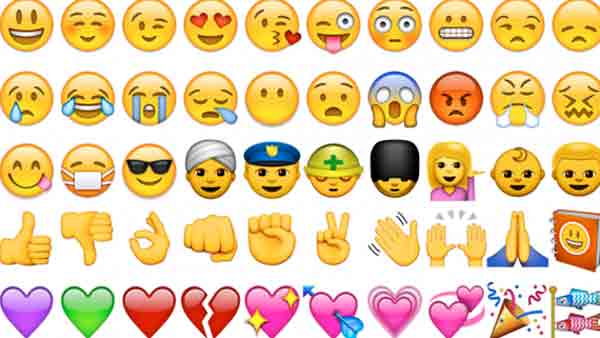
New Delhi, India (BBN)-The emoji has taken over the world. And it sure has come a long way.
From being a way for teens with pagers to communicate in Japan in the ’90s, the digital icon that “expresses an idea or emotion” has changed the way people across the world communicate, reports the Hindustan Times.
So much so that UK’s Oxford Dictionaries declared the “face with tears of joy” emoji as its word of the year in 2015 after its usage more than tripled compared to 2014.
“You can see how traditional alphabet scripts have been struggling to meet the rapid-fire, visually focused demands of 21st Century communication. It’s not surprising that a pictographic script like emoji has stepped in to fill those gaps- it’s flexible, immediate, and infuses tone beautifully.
As a result, emojis are becoming an increasingly rich form of communication, one that transcends linguistic borders,” said Casper Grathwohl, president of Oxford Dictionaries, at the announcement.
Incidentally, data collected by Oxford Dictionaries shows the existence of the word ‘emoji’ in the English-language Japanese publications since 1997.
But it was only in the late ’90 that it started making an impact in the world of technology, making its way to popular online platforms.
In the past few years, however, it has exploded on the digital scene, becoming an integral part of the texting, email and instant messaging worlds.
Today, it is a searchable hashtag on both Tumblr and Instagram, and could soon be integrated into Facebook, as ‘Reactions’, so that users can react to a status, photo or video in the simplest way possible with a series of emojis covering the whole emotional spectrum (like, laughter, surprise, sadness, etc.)
Twitter, too, is keeping up.
Since 2014, tweeple can view emoji on the platform, and it has come up with multiple ways to keep netizens engaged.
“Hashtags are a very critical element of Twitter, so we introduced the #hashflag to allow people to express themselves through emojis.
We know that certain moments are really special, and hence have developed customised emojis for events related to sports, entertainment, festivals etc.
We are planning to come up with several emojis for big moments in the first quarter of 2016,” says Keya Madhvani, head, youth and emerging media partnerships at Twitter.
VITAL STATS
* A 2015 report from SwiftKey, maker of a popular keyboard app, found that around the world, traditional emoji faces are the most frequently used.
‘Happy faces’ and ‘sad faces’ represent the top two categories, at 45 per cent and 14 per cent respectively, of all emojis used.
‘Hearts’, ‘hand gestures’ and ‘romantic’ emojis round out the top five at 12.5 per cent, 5.3 per cent, and 2.4 per cent, respectively
* The same report also reveals that users in all languages use more positive emojis than negative ones, at 70 per cent positive and 15 per cent negative
* A 2015 study from Emogi, a real-time emotional intelligence platform that decodes sentiment, claims that around 92 per cent of the online population uses emojis.
It adds that 4 per cent mobile users use emojis several times a day Yahoo-owned analytics firm Flurry has seen the market share of emojis and personalisation apps increase by over 2,000 per cent since 2013.
* The majority of the growth in 2015 came from emoji apps (mainly keyboards), which gave consumers the ability to share customised correspondence in their favourite messaging apps
* In India, Twitter’s #HappyDiwali emoji was a big hit in 2015. It generated 1.8 million conversations over the three-day holiday period.
On the other hand, globally, #Starwars saw 11 million tweets generated using its custom emojis.
BBN/SK/AD